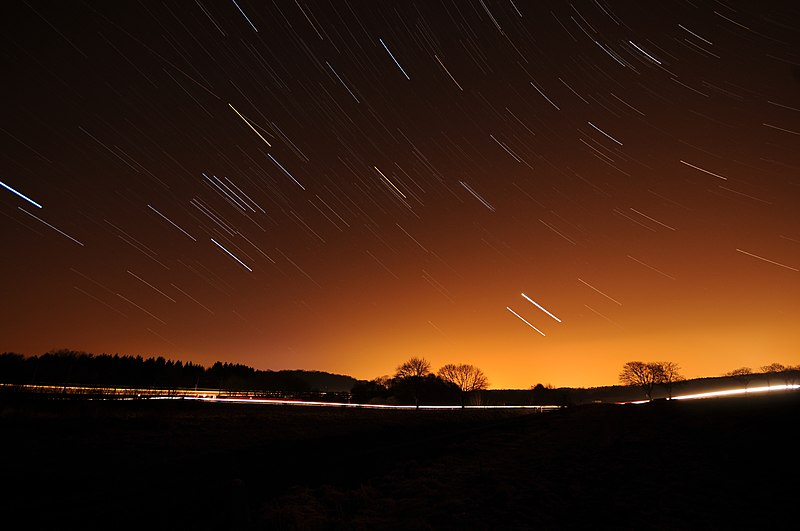That's where the "600" rule can help you, to better control the displacement of the stars lights over the surface of the film or digital sensor. This rule says:
600/FL*CF=ExpT
Where FL is the Focal Lenght, CF is the crop factor of the film or digital sensor and ExpT is the exposure time in seconds.
Let's say you place your tripod over a beautiful night scene, with this gear:
Camera: Canon with APS-C size digital sensor - 1.5x crop factor
Lens: 24mm
FL = 24 * 1.5 or FL = 36
600/36=ExpT or 600/36=16.6s
With this lens and sensor size, you'll need 16.6s of exposure until the star trails begin to show in the image. But 15 or 16 seconds will also be very good for this purpose. If, for night shots, you have a manual exposure meter as I do - I had acquired 3 Gossen Lunasix in the past years for very few money as people prefer in this days go digital with built-in meters - all you have to do is to adjust your exposure index (ISO), exposure time in seconds - as the "600" formula above - corresponding f-stop and shoot.
If you're doing the photo with film, don't forget to compensate the exposure indicated by the meter with the reciprocity factor made public by the film manufacturer for each film variant.
So, for the gear configuration shown in this article, if you intend to have star trails on the picture, 16s is the beginning of the exposure time, and if you prefer to avoid, you have 16s to play with your gear settings until the trails beggin to appear.
In both cases, have fun!

Nenhum comentário:
Postar um comentário